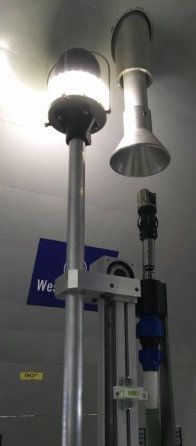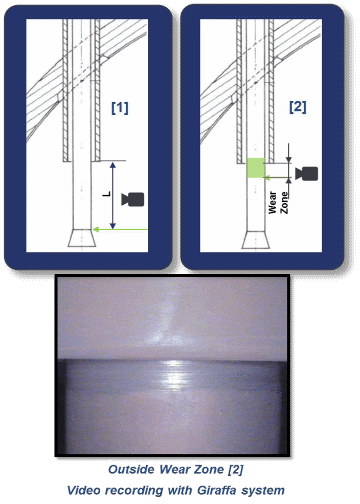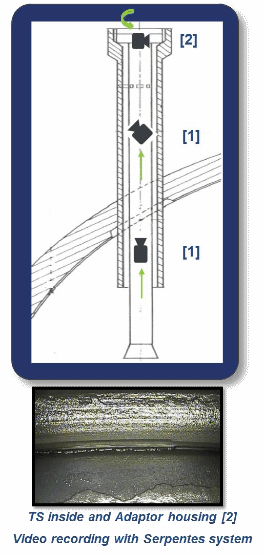Reactor Pressure Vessel Head (RPVH) Thermal Sleeve (TS) flange wear failure is a known ageing phenomenon on PWR plants.
Westinghouse offers a direct visual inspection system capable of accurately assessing Thermal Sleeve and adaptor wear, as well as locating any flange debris in the adaptor housing. The inspection tools are delivered by a tool carrier for an ALARA-optimized inspection.

Figure 1 - Giraffa and Serpentes inspection systems
WesDyne, the Westinghouse NDE company, developed the direct Thermal Sleeve Wear Measurements system in 2018. The inspection systems have successfully been used at a customer site in Europe, ensuring reliable wear measurements for safe plant operations.
The Westinghouse direct inspection system is used to get the full status of the Thermal Sleeve and RPVH adaptor wear. The inspection system consists of two different tooling systems:
The Outside Giraffa system is used to measure:

Figure 2 - Inspections with Giraffa system
The inside Serpentes system is used to visually survey:

Figure 3 - Inspections with Serpentes system